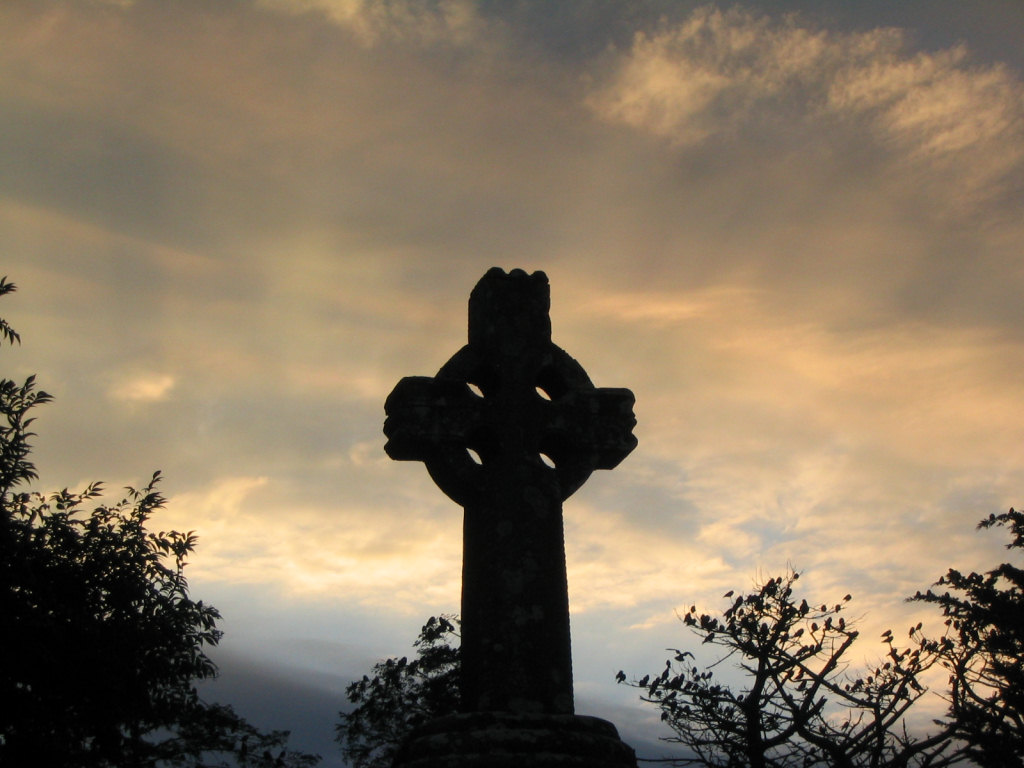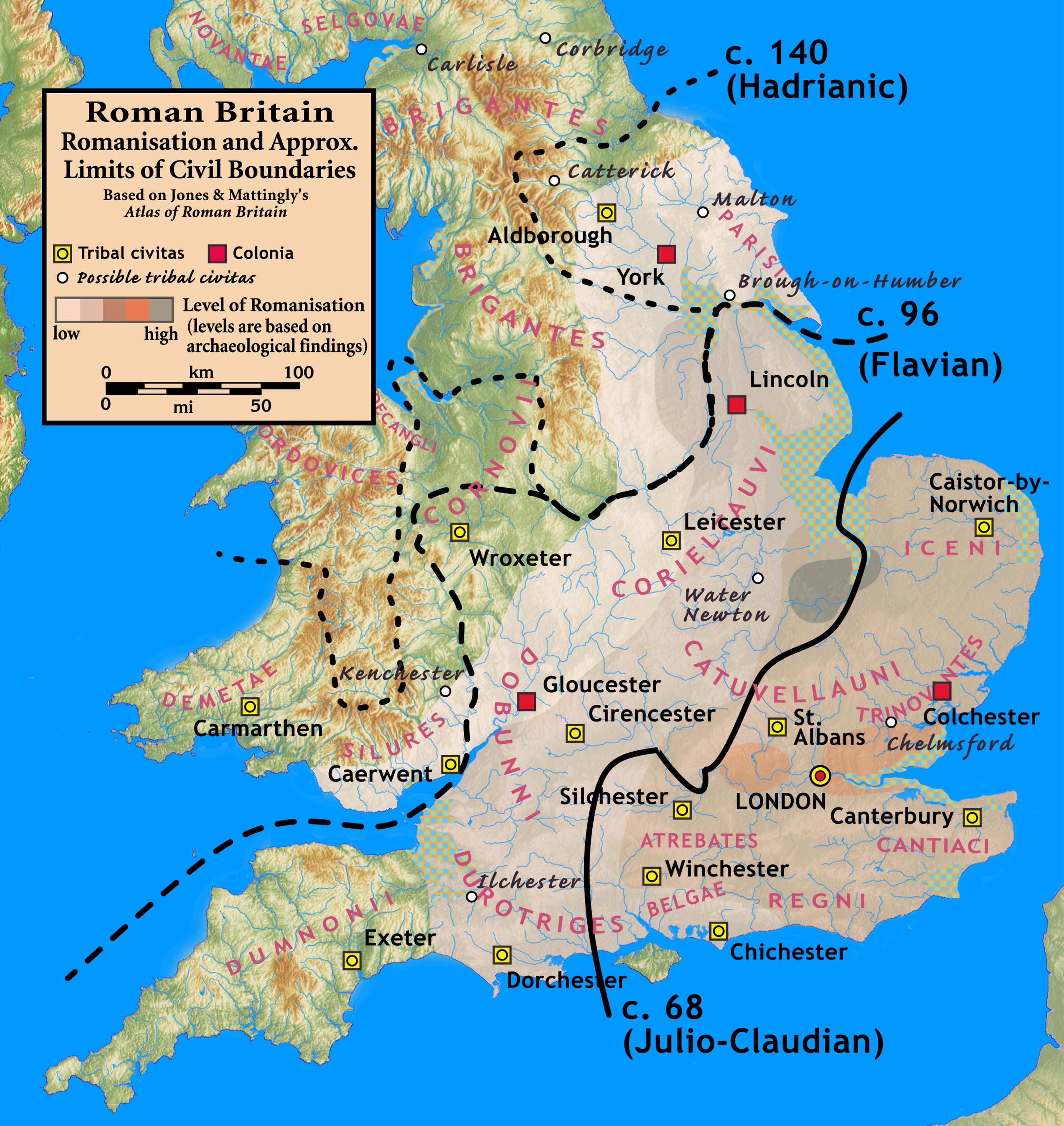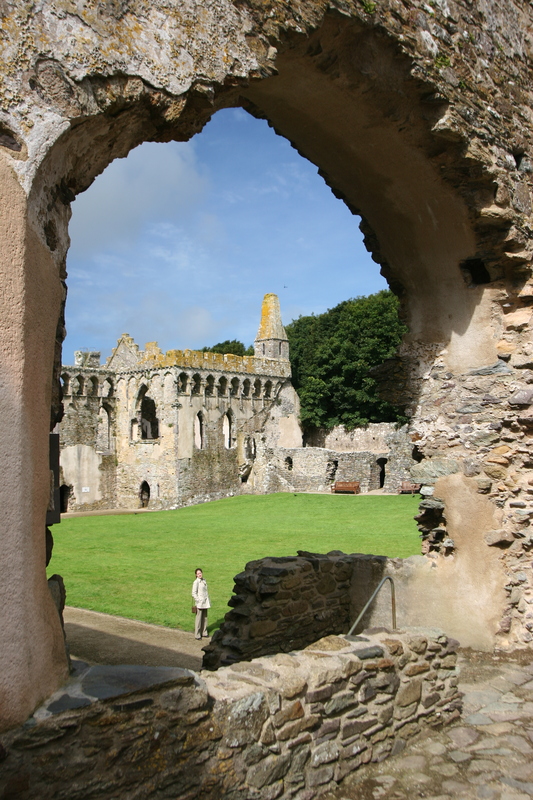|
Deruvian
Deruvian (), also known by several other names including Damian, was a possibly legendary 2nd-century bishop and saint, said to have been sent by the pope to answer King Lucius's request for baptism and conversion to Christianity. Together with his companion St Fagan, he was sometimes reckoned as the apostle of Britain. King Lucius's letter (in most accounts, to Pope Eleutherius) may represent earlier traditions but does not appear in surviving sources before the 6th century; the names of the bishops sent to him does not appear in sources older than the early 12th century, when their story was used to support the independence of the bishops of St Davids in Wales and the antiquity of the Glastonbury Abbey in England. The story became widely known following its appearance in Geoffrey of Monmouth's '' History of the Kings of Britain''. This was influential for centuries and its account of SS Fagan and Deruvian was used during the English Reforma ... [...More Info...] [...Related Items...] OR: [Wikipedia] [Google] [Baidu] |
List Of Welsh Saints
This list of Welsh saints includes Christian saints with Welsh connections, either because they were of Welsh origin and ethnicity or because they travelled to Wales from their own homeland and became noted in their hagiography for their work there. The pagan Celts of Britain had already been extensively Christianized during the Roman period: although only four victims of Diocletian's persecution are now known (Saints Alban, " Amphibalus", and Julius and Aaron), Britons met the pagan Saxon invaders largely as Christians prior to being driven back to Wales, Cornwall, and Brittany. The family of Vortigern, which continued to hold Powys in the early medieval period, produced numerous saints. Although they largely refrained from missionizing among the Germans, Welsh refugees and missionaries were responsible for the Christianization of Ireland and Brittany. The title of "saint" was used quite broadly in the Celtic churches. Extreme cases are Irish accounts of Gerald of Mayo's ... [...More Info...] [...Related Items...] OR: [Wikipedia] [Google] [Baidu] |
Saint Dyfan
Saint Dyfan is a highly obscure figure who was presumably the namesake of Merthyr Dyfan (" martyrium of Dyfan") and therefore an early Christian saint and martyr in southeastern Wales in Roman or Sub-Roman Britain.Bartrum, Peter C"Dyfan, St.", in ''A Welsh Classical Dictionary: People in History and Legend up to about A. D. 1000'', p. 236.National Library of Wales, 1993. Emended 2009. He is sometimes styled the protomartyr of Wales. The erection of his martyrium was credited to the 6th-century St Teilo. In the 19th century, Edward Williams conflated him with St Deruvian, a figure in the legendary accounts of the baptism of King Lucius of Britain. The discovery of Williams's alterations and forgeries have since discredited this connection.Bartrum, Peter C"Duvianus (1)", in ''A Welsh Classical Dictionary: People in History and Legend up to about A. D. 1000'', p. 236.National Library of Wales, 1993. Emended 2009. Partially based on t ... [...More Info...] [...Related Items...] OR: [Wikipedia] [Google] [Baidu] |
Merthyr Dyfan
Merthyr Dyfan or Dyfan is a northeastern suburb of Barry in the Vale of Glamorgan, in south Wales, formerly an independent medieval village. It is also an ecclesiastical parish and a formal electoral ward of the Vale of Glamorgan. It borders Colcot to the west, Buttrills to the southwest and Gibbonsdown to the southeast. Its main roads are Merthyr Dyfan Road, a hilly road leading down from the A4050 road (Port Road) which leads into Wenvoe and Cardiff; and Skomer Road which separates it from Gibbonsdown and eventually also leads to the A4050 road. Merthyr Dyfan contains an old parish church, Barry Rugby Club, Bryn Hafren Comprehensive School and the Master Mariner Pub and Holm View Leisure Centre, although the last two could be considered to be in northern Gibbonsdown. History Although the usual modern meaning of the Welsh word ''merthyr'' (from the Greek ''μαρτυς, μαρτυρος'' "witness") is 'martyr', the word formerly also indicated a martyrium, a martyr's grav ... [...More Info...] [...Related Items...] OR: [Wikipedia] [Google] [Baidu] |
Celtic Christianity
Celtic Christianity is a form of Christianity that was common, or held to be common, across the Celtic languages, Celtic-speaking world during the Early Middle Ages. The term Celtic Church is deprecated by many historians as it implies a unified and identifiable entity entirely separate from that of mainstream Western Christendom. For this reason, many prefer the term Insular Christianity. As Patrick Wormald explained, "One of the common misconceptions is that there was a ''Roman'' Church to which the ''Celtic'' Church was nationally opposed." Some writers have described a distinct "Celtic Church" uniting the Celts (modern), Celtic peoples and distinguishing them from adherents of the Latin Church, Roman Church, while others classify Celtic Christianity as a set of distinctive practices occurring in those areas. Varying scholars reject the former notion, but note that there were certain traditions and practices present in both the Irish and British churches that were not seen ... [...More Info...] [...Related Items...] OR: [Wikipedia] [Google] [Baidu] |
Glastonbury Abbey
Glastonbury Abbey was a monastery in Glastonbury, Somerset, England. Its ruins, a grade I listed building and scheduled ancient monument, are open as a visitor attraction. The abbey was founded in the 8th century and enlarged in the 10th. It was destroyed by a major fire in 1184, but subsequently rebuilt and by the 14th century was one of the richest and most powerful monasteries in England. The abbey controlled large tracts of the surrounding land and was instrumental in major drainage projects on the Somerset Levels. The abbey was suppressed during the Dissolution of the Monasteries under Henry VIII of England, King Henry VIII of England. The last abbot, Richard Whiting (abbot), Richard Whiting (Whyting), was hanged, drawn and quartered as a traitor on Glastonbury Tor in 1539. From at least the 12th century, the Glastonbury area has been associated with the legend of King Arthur, a connection promoted by medieval monks who asserted that Glastonbury was Avalon. Christian legend ... [...More Info...] [...Related Items...] OR: [Wikipedia] [Google] [Baidu] |
Romano-British Culture
The Romano-British culture arose in Britain under the Roman Empire following the Roman conquest in AD 43 and the creation of the province of Britannia. It arose as a fusion of the imported Roman culture with that of the indigenous Britons, a people of Celtic language and custom. Scholars such as Christopher Snyder believe that during the 5th and 6th centuries – approximately from 410 when the Roman legions withdrew, to 597 when St Augustine of Canterbury arrived – southern Britain preserved an active sub-Roman culture that survived the attacks from the Anglo-Saxons and even used a vernacular Latin when writing. Arrival of the Romans Roman troops, mainly from nearby provinces, invaded in AD 43, in what is now part of England, during the reign of Emperor Claudius. Over the next few years the province of Britannia was formed, eventually including the whole of what later became England and Wales and parts of Scotland.Kinder, H. & Hilgemann W. ''The Penguin Atlas of Wo ... [...More Info...] [...Related Items...] OR: [Wikipedia] [Google] [Baidu] |
Roman Britain
Roman Britain was the territory that became the Roman province of ''Britannia'' after the Roman conquest of Britain, consisting of a large part of the island of Great Britain. The occupation lasted from AD 43 to AD 410. Julius Caesar invaded Britain in 55 and 54 BC as part of his Gallic Wars. According to Caesar, the Britons had been overrun or culturally assimilated by the Belgae during the British Iron Age and had been aiding Caesar's enemies. The Belgae were the only Celtic tribe to cross the sea into Britain, for to all other Celtic tribes this land was unknown. He received tribute, installed the friendly king Mandubracius over the Trinovantes, and returned to Gaul. Planned invasions under Augustus were called off in 34, 27, and 25 BC. In 40 AD, Caligula assembled 200,000 men at the Channel on the continent, only to have them gather seashells () according to Suetonius, perhaps as a symbolic gesture to proclaim Caligula's victory over th ... [...More Info...] [...Related Items...] OR: [Wikipedia] [Google] [Baidu] |
Church Of England
The Church of England (C of E) is the State religion#State churches, established List of Christian denominations, Christian church in England and the Crown Dependencies. It is the mother church of the Anglicanism, Anglican Christian tradition, tradition, with foundational doctrines being contained in the ''Thirty-nine Articles'' and ''The Books of Homilies''. The Church traces its history to the Christian hierarchy recorded as existing in the Roman Britain, Roman province of Britain by the 3rd century and to the 6th-century Gregorian mission to Kingdom of Kent, Kent led by Augustine of Canterbury. Its members are called ''Anglicans''. In 1534, the Church of England renounced the authority of the Papacy under the direction of Henry VIII, beginning the English Reformation. The guiding theologian that shaped Anglican doctrine was the Reformer Thomas Cranmer, who developed the Church of England's liturgical text, the ''Book of Common Prayer''. Papal authority was Second Statute of ... [...More Info...] [...Related Items...] OR: [Wikipedia] [Google] [Baidu] |
Catholic Church In England And Wales
The Catholic Church in England and Wales (; ) is part of the worldwide Catholic Church in full communion with the Holy See. Its origins date from the 6th century, when Pope Gregory I through a Roman missionary and Benedictine monk, Augustine, later Augustine of Canterbury, intensified the evangelization of the Kingdom of Kent, linking it to the Holy See in 597 AD. This unbroken communion with the Holy See lasted until King Henry VIII ended it in 1534. Communion with Rome was restored by Queen Mary I in 1555 following the Second Statute of Repeal and eventually finally broken by Elizabeth I's 1559 Religious Settlement, which made "no significant concessions to Catholic opinion represented by the church hierarchy and much of the nobility." For 250 years, the government forced members of the pre-Reformation Catholic Church known as recusants to go underground and seek academic training in Catholic Europe, where exiled English clergy set up schools and seminaries for the son ... [...More Info...] [...Related Items...] OR: [Wikipedia] [Google] [Baidu] |
English Reformation
The English Reformation began in 16th-century England when the Church of England broke away first from the authority of the pope and bishops Oath_of_Supremacy, over the King and then from some doctrines and practices of the Catholic Church. These events were part of the wider European Reformation: various religious and political movements that affected both the practice of Christianity in Western Europe, Western and Central Europe and relations between church and state. The English Reformation began as more of a political affair than a theological dispute. In 1527 Henry VIII requested an annulment of his marriage, but Pope Clement VII refused. In response, the English Reformation Parliament, Reformation Parliament (1529–1536) passed laws abolishing papal authority in England and declared Henry to be Supreme Head of the Church of England, head of the Church of England. Final authority in doctrinal disputes now rested with the monarch. Though a religious traditionalist hims ... [...More Info...] [...Related Items...] OR: [Wikipedia] [Google] [Baidu] |
St Davids Cathedral
St Davids Cathedral () is a Church in Wales cathedral situated in St Davids, Britain's smallest city, in the county of Pembrokeshire, near the most westerly point of Wales. Early history Monastery of Saint David, Wales, A monastic community was founded by Saint David, Abbot of Menevia, who died in 589. Between 645 and 1097, the community was attacked many times by raiders, including the Vikings; however it was of such note as both a religious and an intellectual centre that King Alfred summoned help from the monastic community at St Davids in rebuilding the intellectual life of the Kingdom of Wessex. Many of the bishops were murdered by raiders and marauders, including Bishop Moregenau in 999 and Bishop Abraham in 1080. The stone that marked his grave, known as the "Abraham Stone", is intricately carved with early Celtic art, Celtic symbols and is now on permanent display within the Cathedral Exhibition at Porth-y-Tŵr. In 1081, William the Conqueror William I's Welsh campaign o ... [...More Info...] [...Related Items...] OR: [Wikipedia] [Google] [Baidu] |
Celtic Tribes Of Britain
The names of the Celtic Iron Age tribes in Britain were recorded by Roman and Greek historians and geographers, especially Ptolemy. Information from the distribution of Celtic coins has also shed light on the extents of the territories of the various groups that occupied the island. Historiography Available evidence seems to indicate that the tribes of the Middle Iron Age tended to group together into larger tribal kingdoms during the Late Iron Age. The Belgae and Atrebates share their names with tribes in France and Belgium, which, together with Caesar's note that Diviciacus of the Suessiones had ruled territory in Britain, suggests that this part of the country might have been conquered and ruled from abroad. The Parisii have also been suggested as having been an immigrant group. Some historians have suggested that it might be possible to distinguish the distributions of different tribes from their pottery assemblages for the Middle Iron Age. However, no names are avail ... [...More Info...] [...Related Items...] OR: [Wikipedia] [Google] [Baidu] |







